How to Draw a Snail
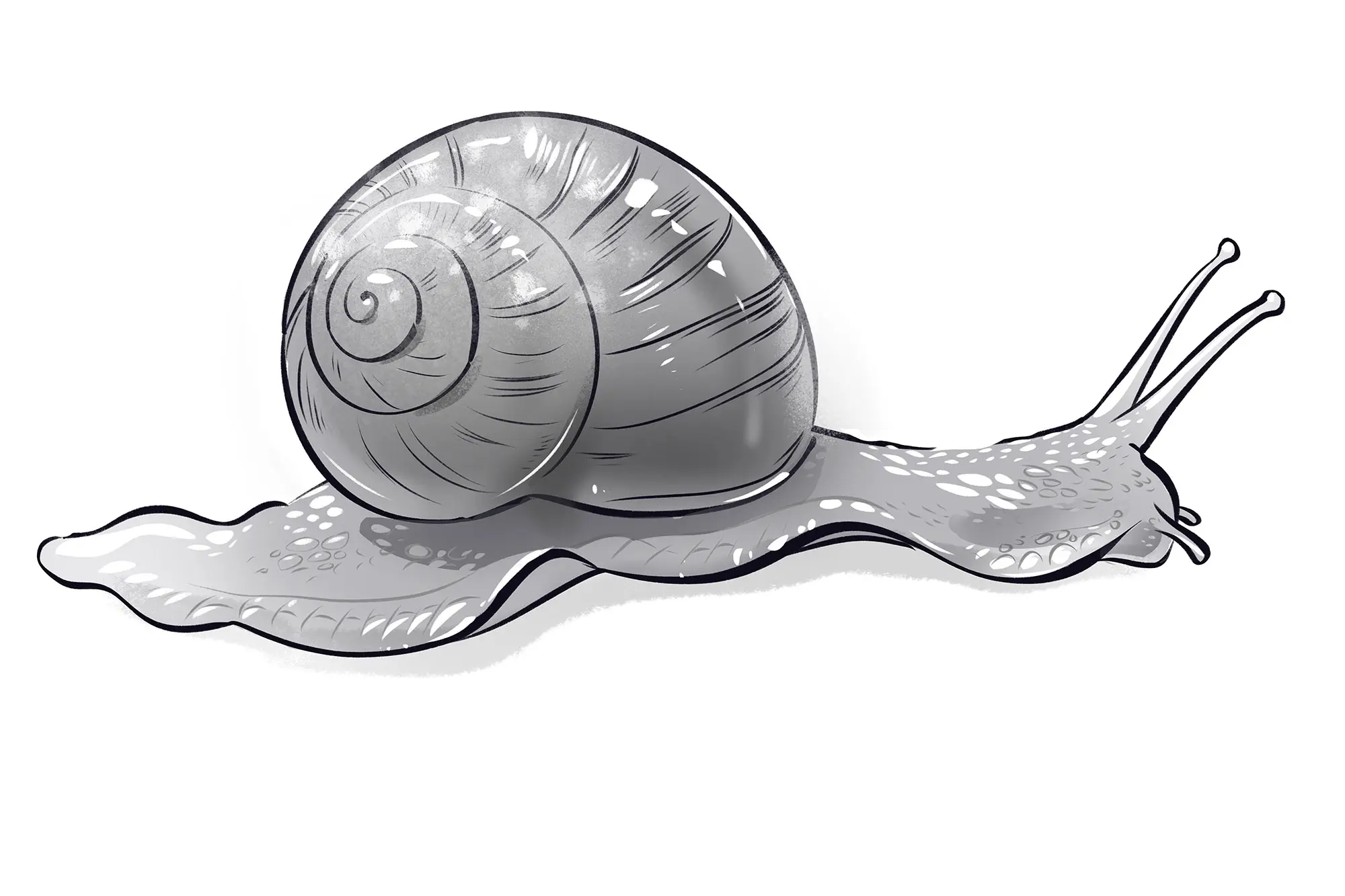
Snails are gastropod mollusks found worldwide, easily spotted in forests or in our gardens on rainy days for terrestrial species: they like moist soil. There are also saltwater and freshwater aquatic species.
Although we usually only encounter small specimens in Europe, some, like the giant African snail, have shells that can reach up to 30 cm. For comparison, the shell of the largest snail in France, the Burgundy snail, measures up to 5 cm. The smallest snail can measure barely 2 millimeters.
The anatomy of the snail
It is an invertebrate whose anatomy can be summarized in these few points:
- a flexible ventral foot
- two eyes on rounded balls at the end of two large tentacles - two smaller sensory tentacles below the larger ones
- a hollow, spiral dorsal shell
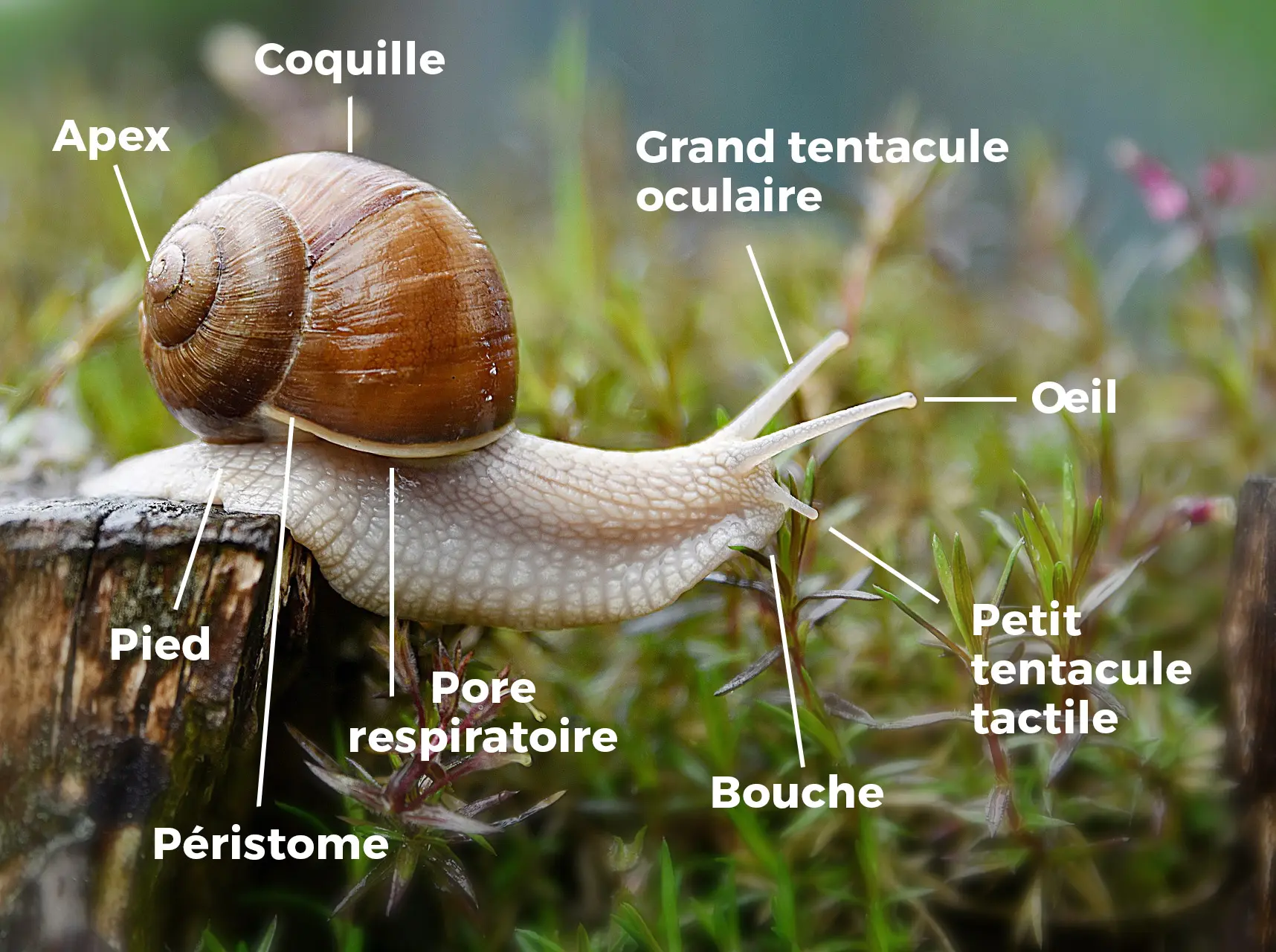
Its organs (kidney, heart, liver, etc.) are sheltered by its shell, but its foot and head can also retract into it if the animal feels threatened. Its tentacles are retractable; the two smaller tentacles are used to detect smells, and the eyes are located at the tips of the two larger ones.
They move by contracting and releasing all the muscles in their foot, creating smooth, undulating movements. It can stretch, contract, and twist its foot... It slides on the mucus it produces, hence the wet look on its textured skin.
Shells can be rounded, extending to a very elongated conical spiral shape depending on the species. The spiral of their shell coils from the apex (the top of the shell's coiling).
Drawing the snail's head
To better understand the textures of the snail's skin, I will quickly zoom in on its head:
1) I sketch the 2 largest tentacles. They are raised upwards, often you can spot two small black dots at the tips. Those are its eyes:
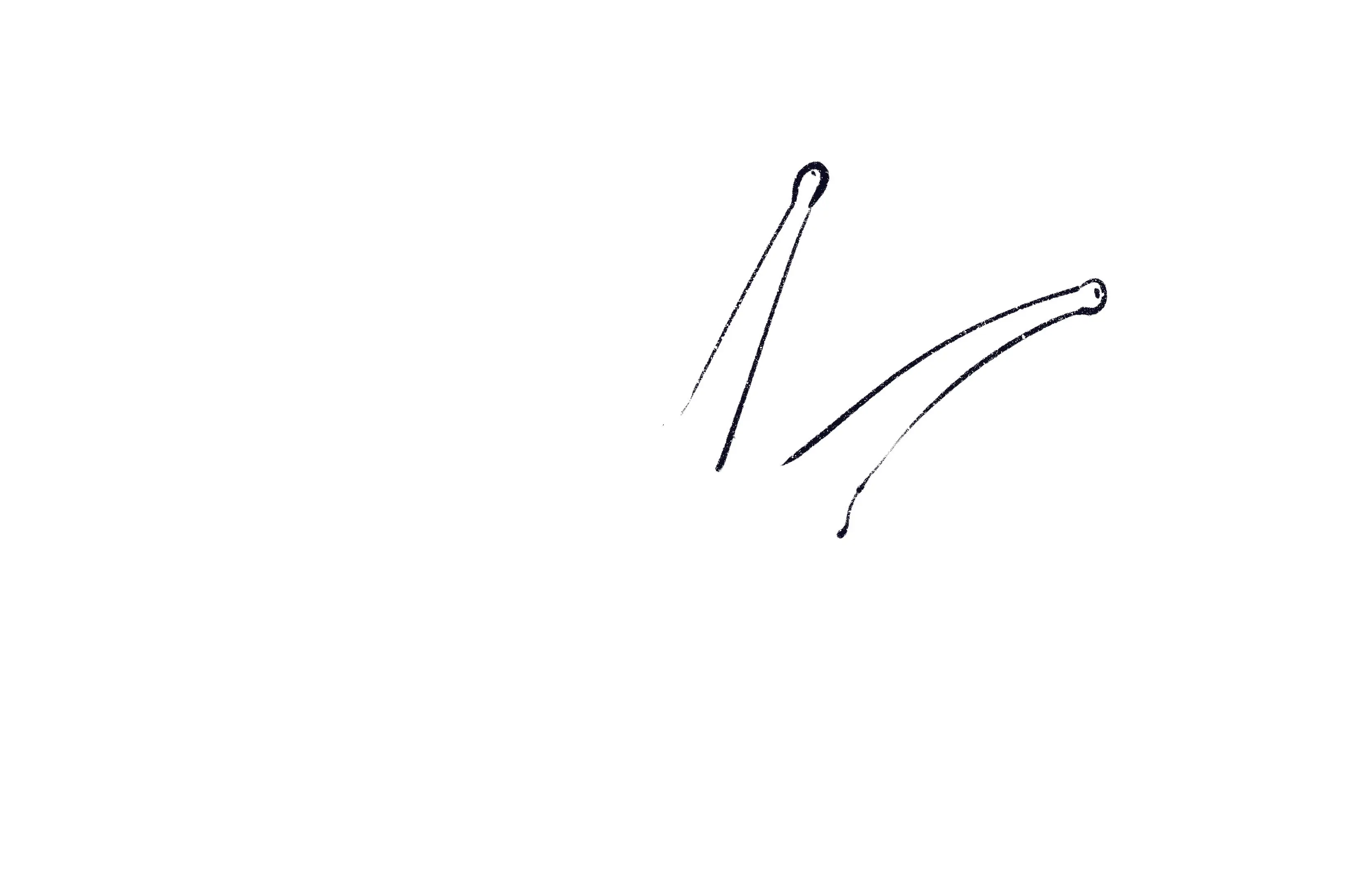
2) I draw the mouth and the head with soft and rounded lines. Above, there are two small tentacles that often bend downwards.
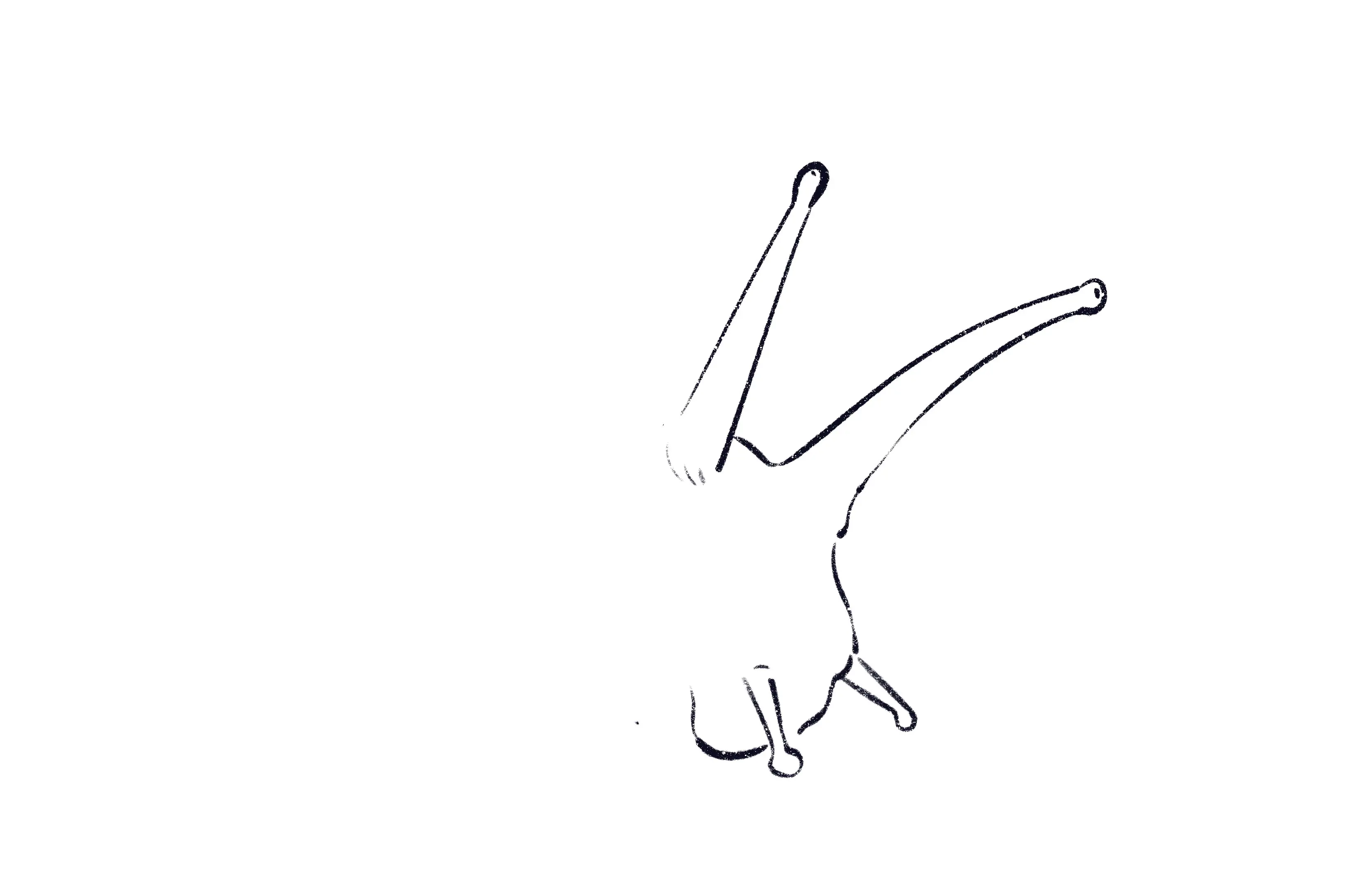
3) I draw a part of the snail's body, also showing the underside of the ventral part of its foot.
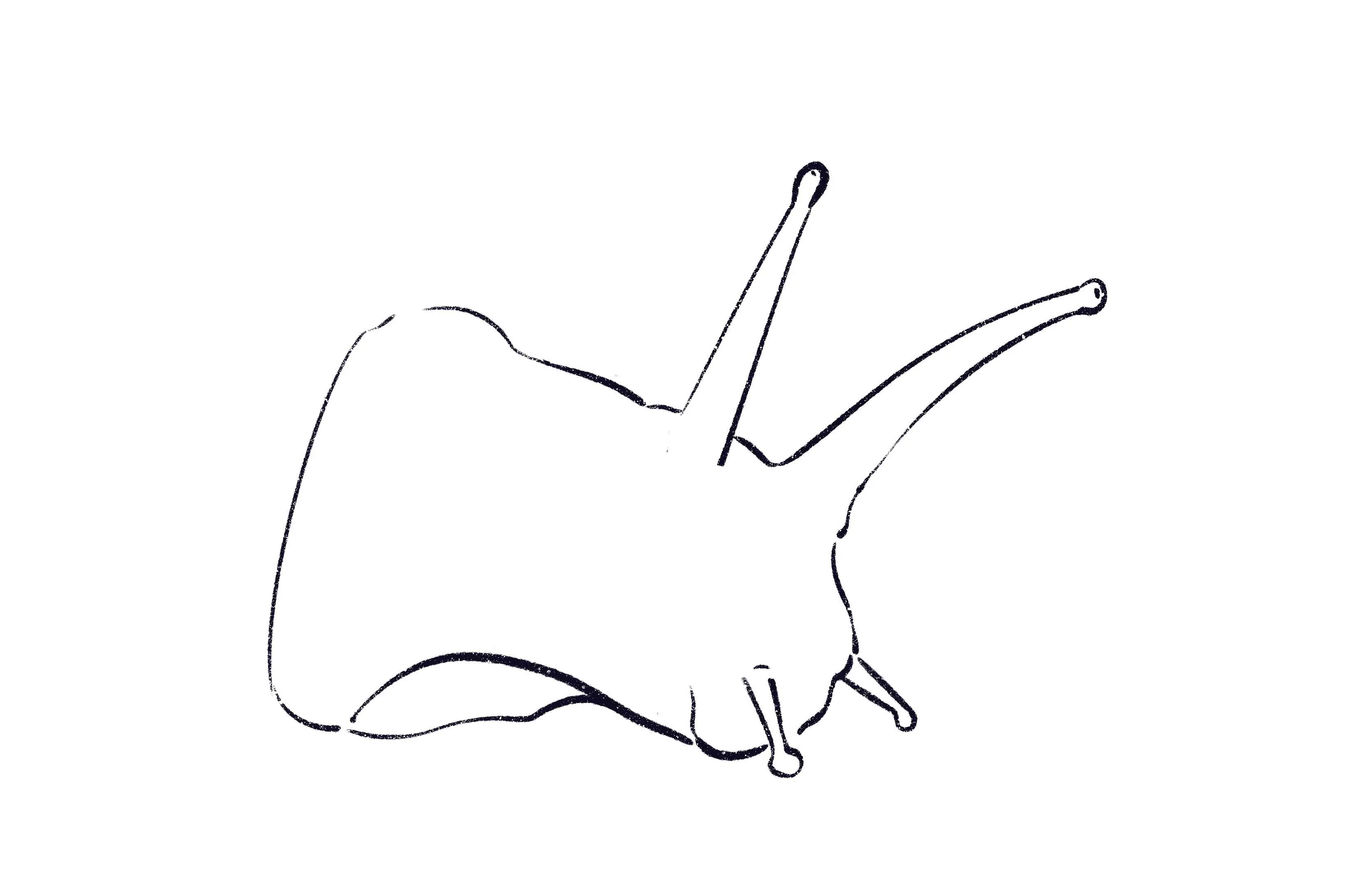
4) Here we get to the heart of the matter: the texture of its skin.
We can simplify the drawing by not illustrating every detail of its contours. Simply draw the texture on the darkest areas (where folds and curves form).
So, I accumulate small curves on the top of his head. In the middle of the drawing, I add some shapes between the oval and the rectangle, surrounded by more subtle curved lines. At the bottom of the foot, you can lightly sketch one slightly curved arch-shaped line after the other.
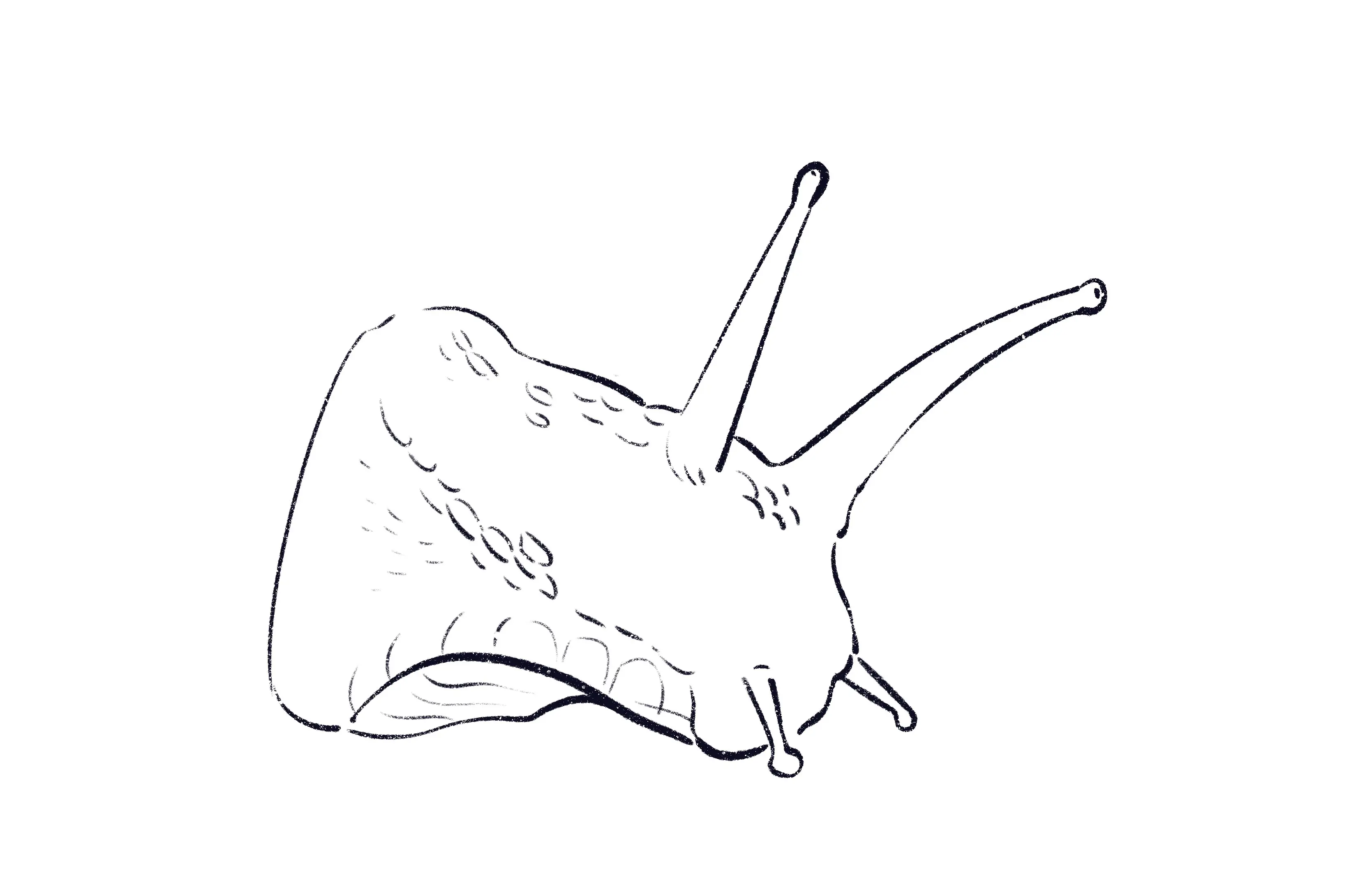
5) I add highlights and shadows to accentuate the animal's movement: on its head, then extending to the mouth and the rest of the foot. The shadow is darker on the underside of the foot. I keep the edges of the foot white as they are generally wider than the head and are not in its shadow.
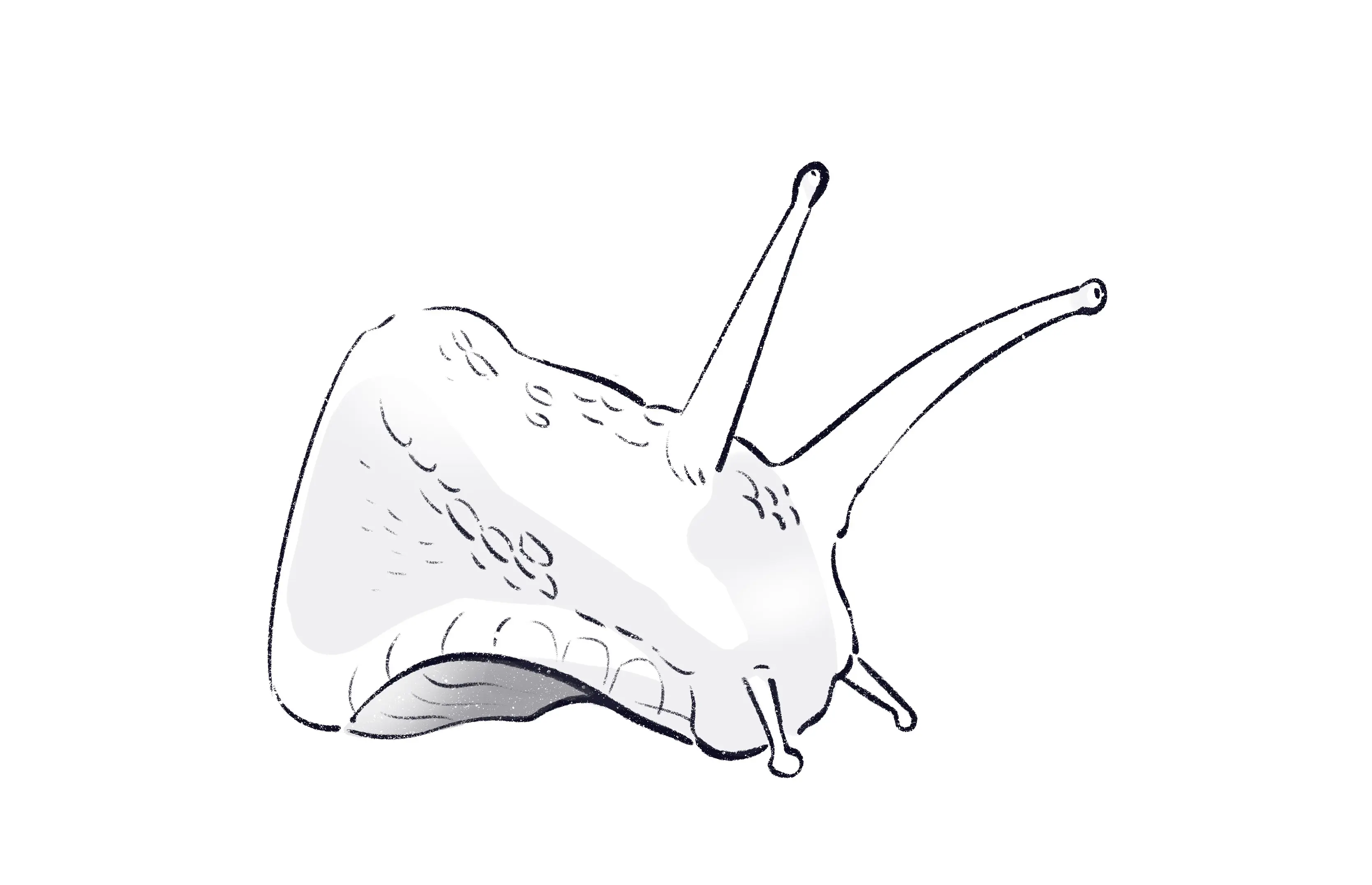
6) I once again emphasize the skin texture by following the technique from point 4.
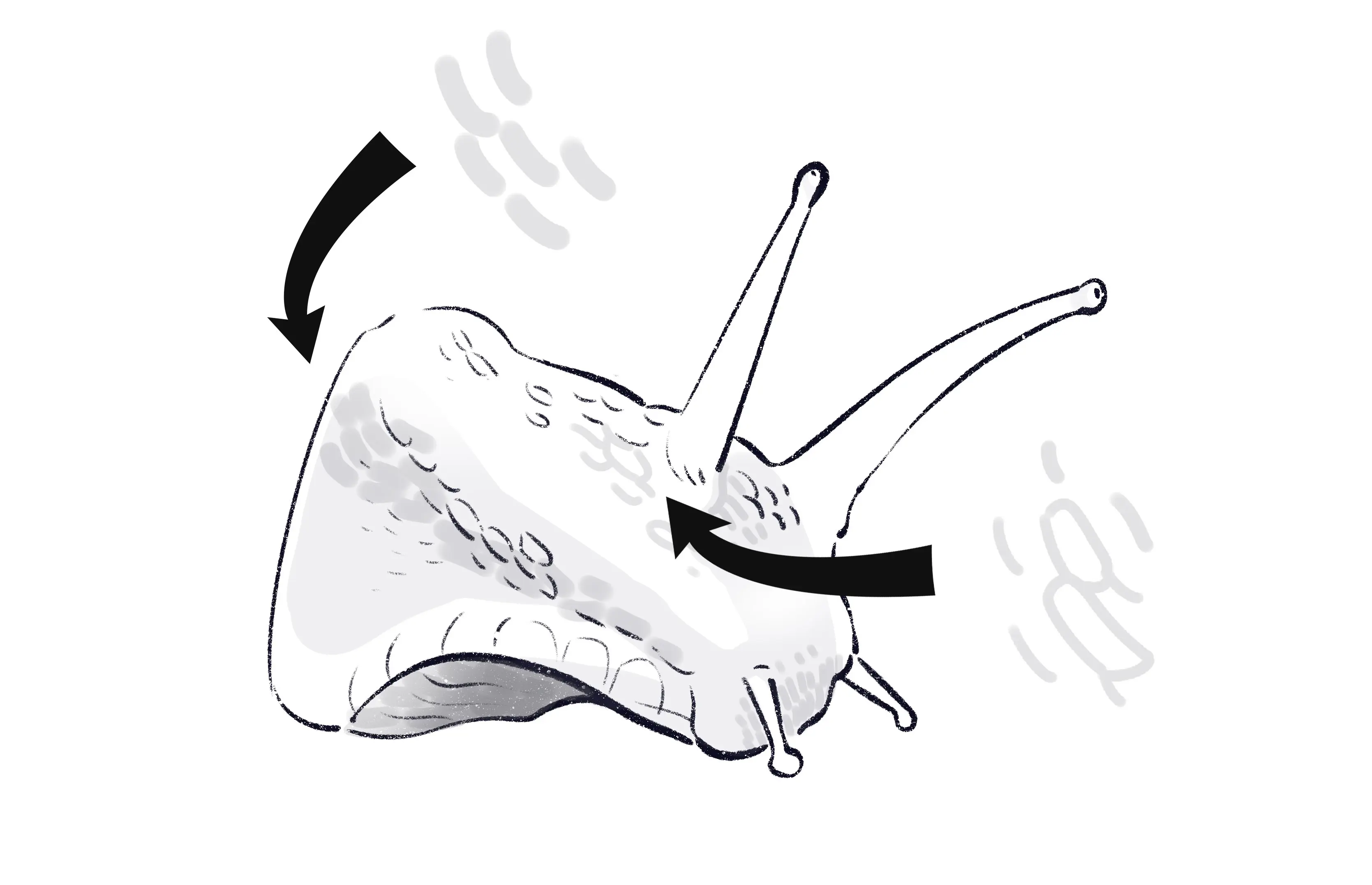
Drawing a Snail Step by Step
Let's start drawing the little creature in full now that we've looked at the textures in more detail.
1) I draw a wavy arrow to define the length of the snail, and also to help me draw the wavy movement of its foot. (I will erase this line later.)
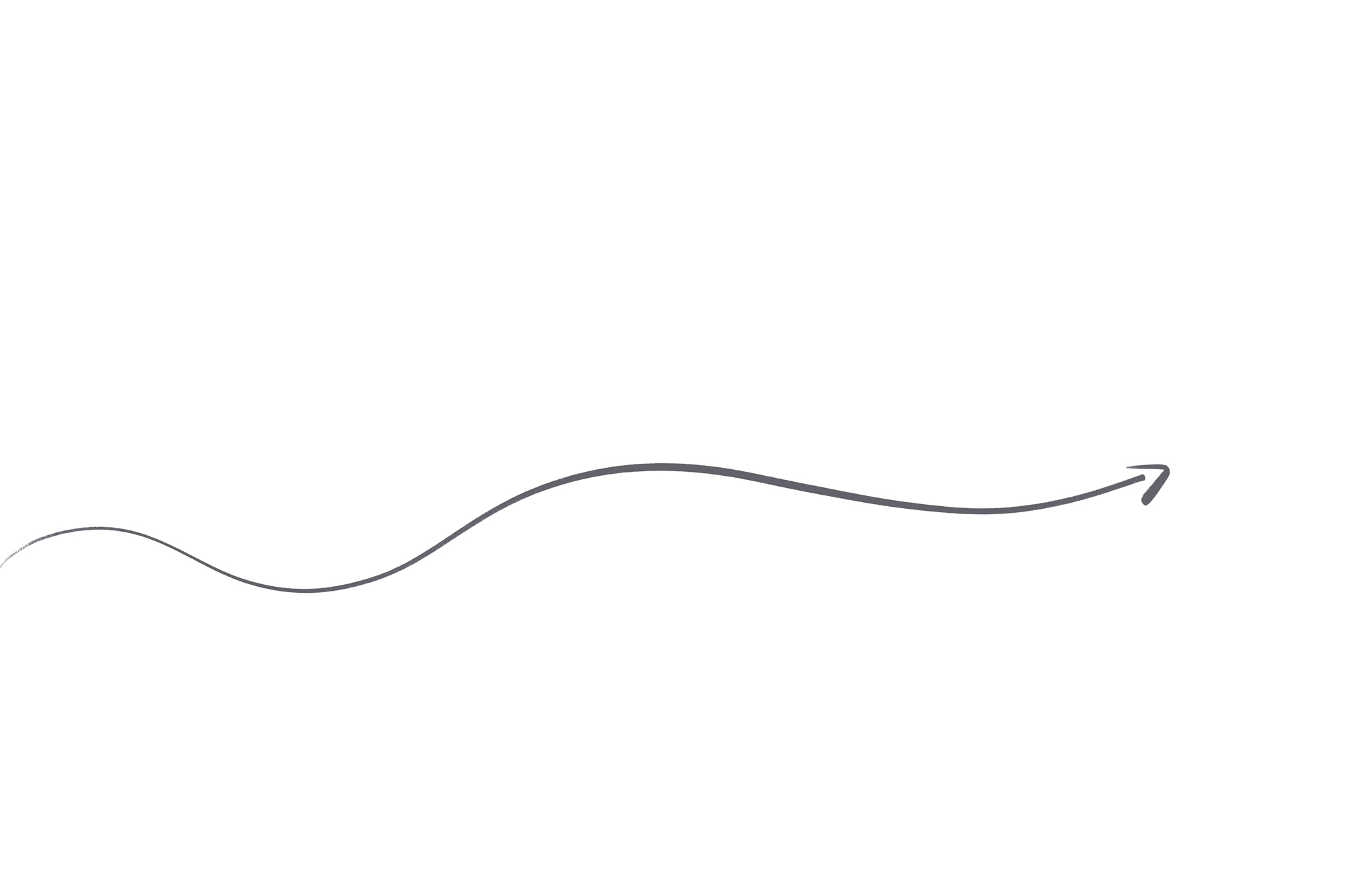
2) I define the thickness of the foot: with a wide S-curve at the top, and more marked undulations at the bottom to show movement.
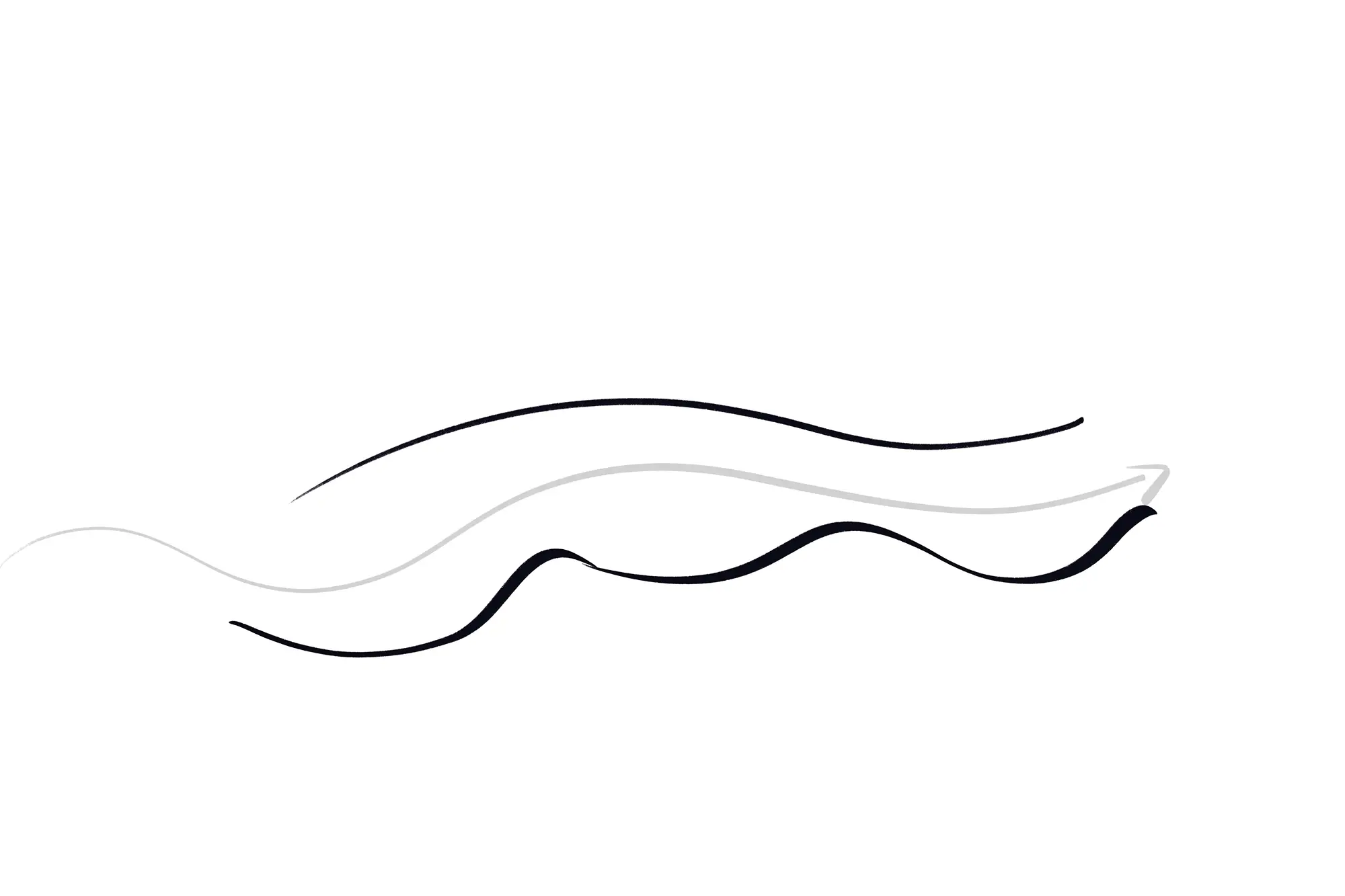
3) I finish the drawing of the foot with smaller waves than before at the tip.
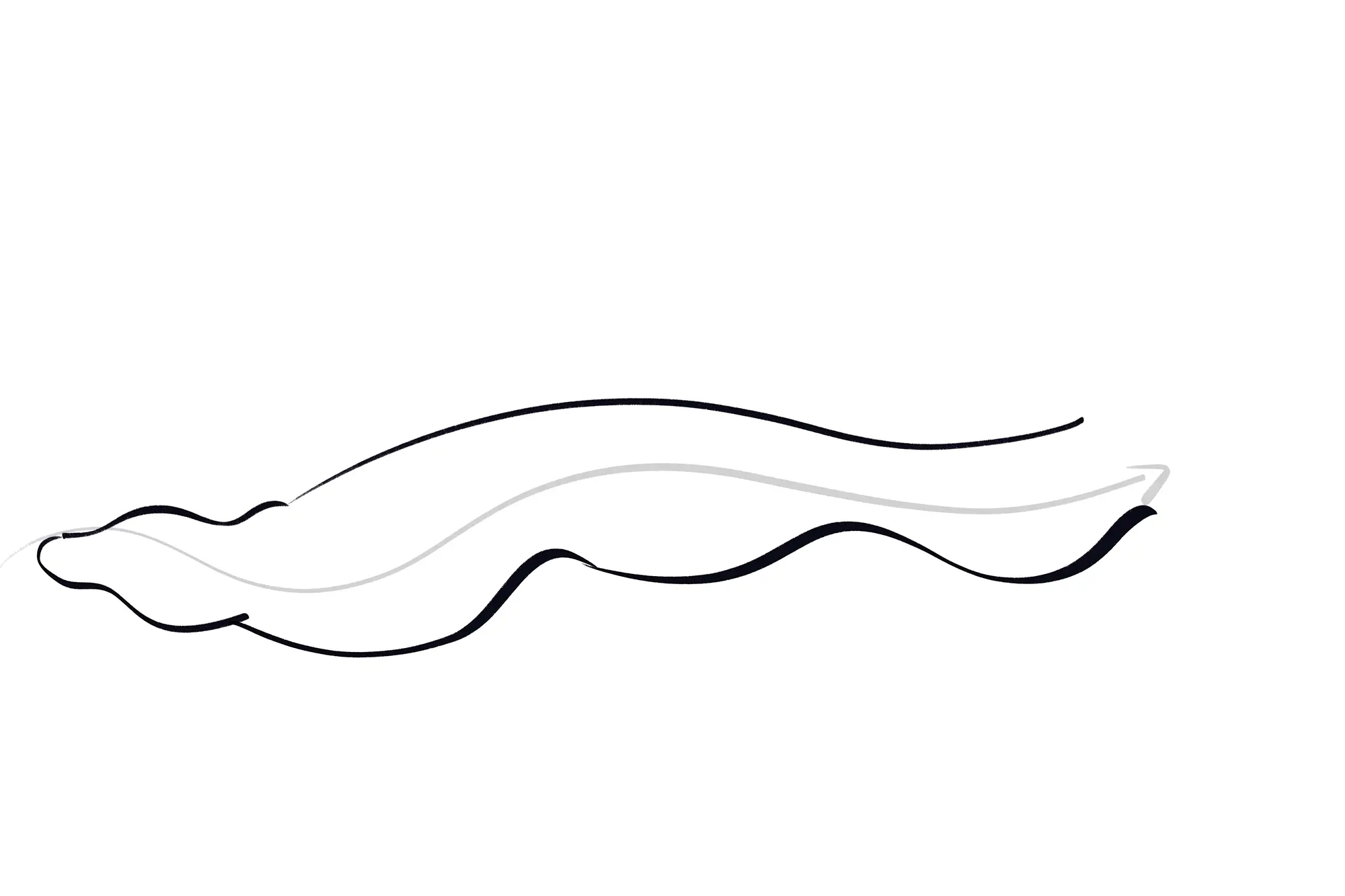
4) I add two large tentacles on the top of its head, punctuated by two small rounded balls where its eyes are.
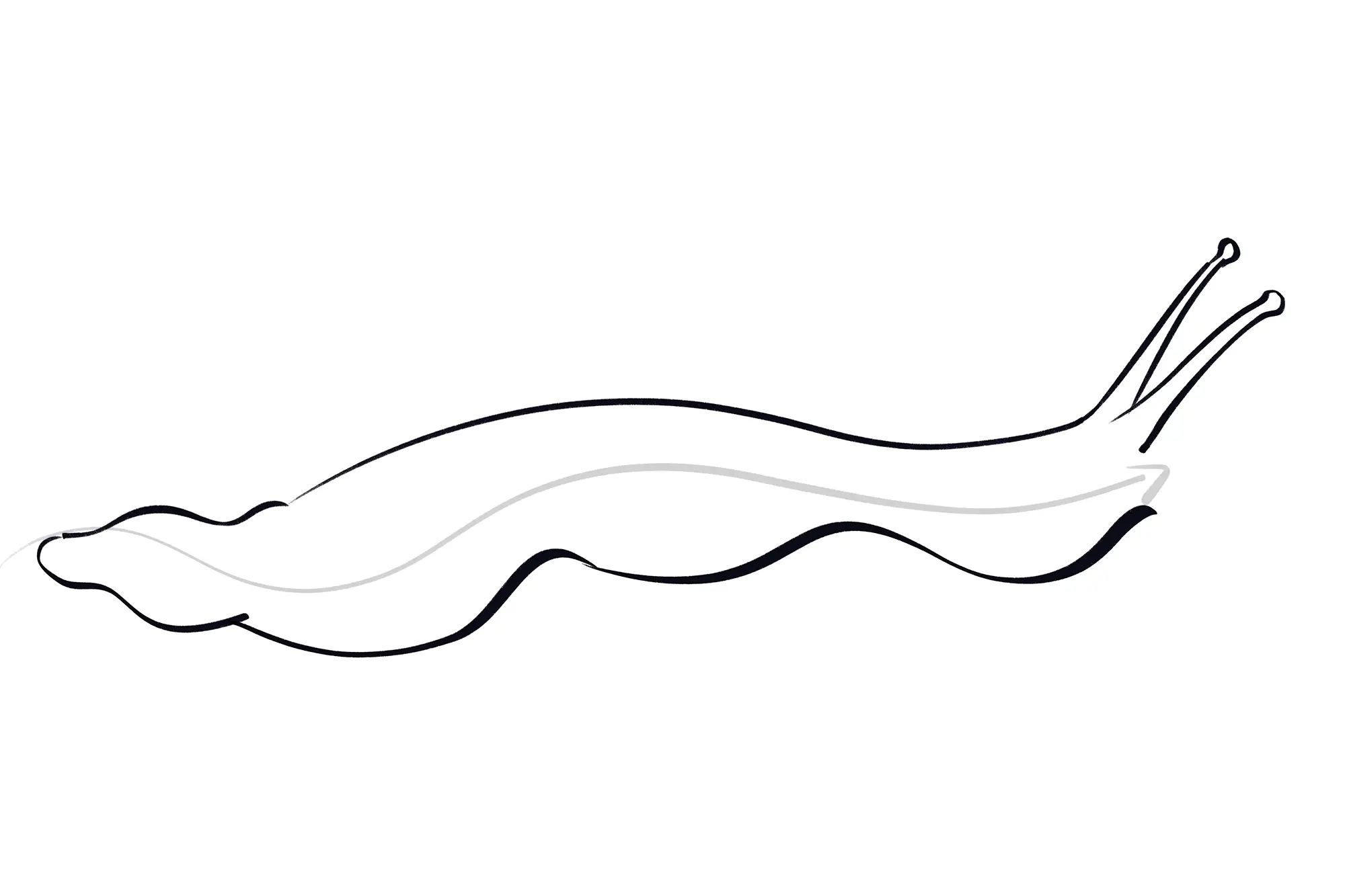
5) I finish drawing the visible part of the snail's body by adding lines that show the underside of the foot (where the undulations were highest). With a simple rounded shape, I draw its mouth.
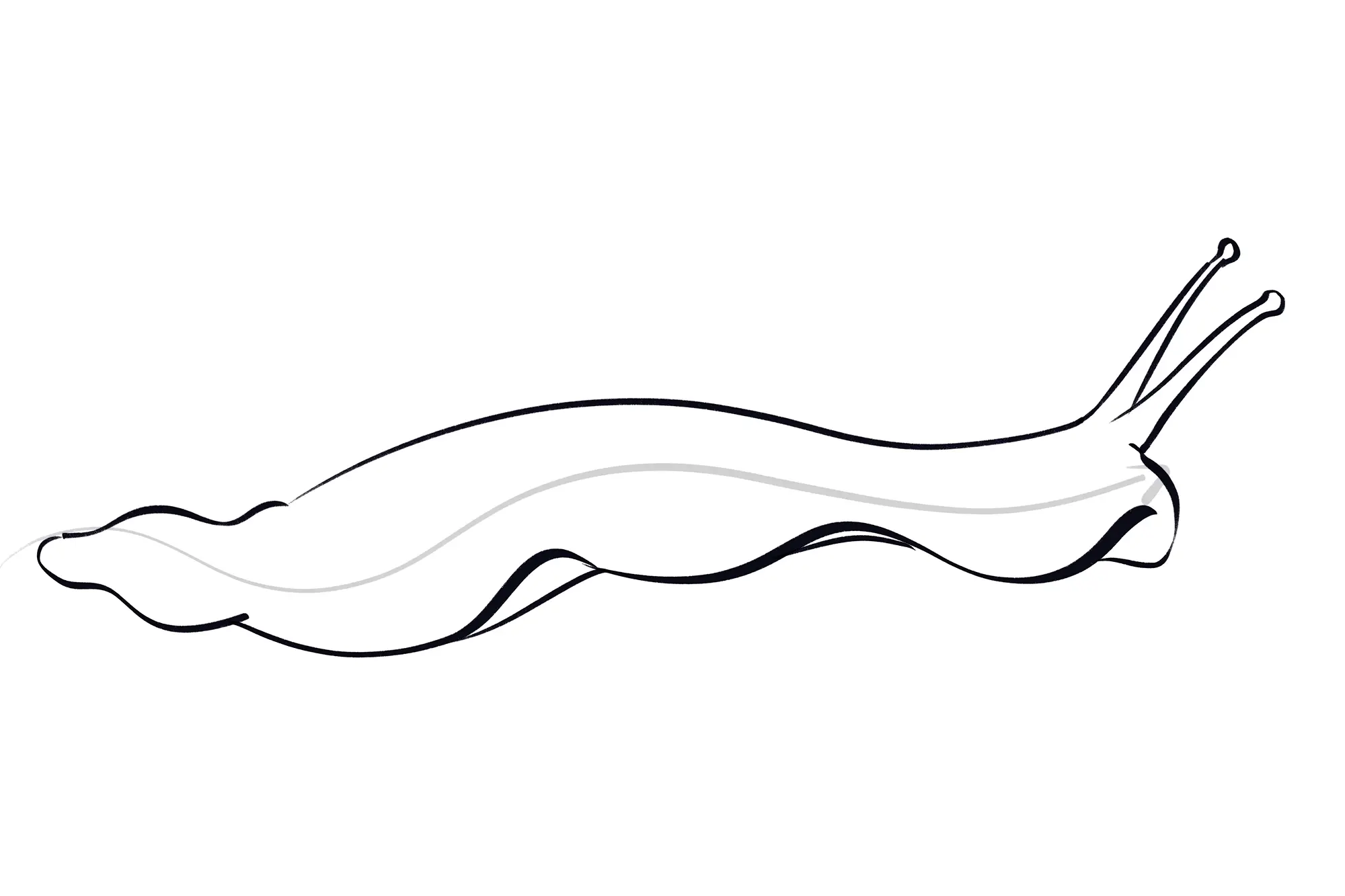
6) Let's not forget the small tentacles next to the mouth!
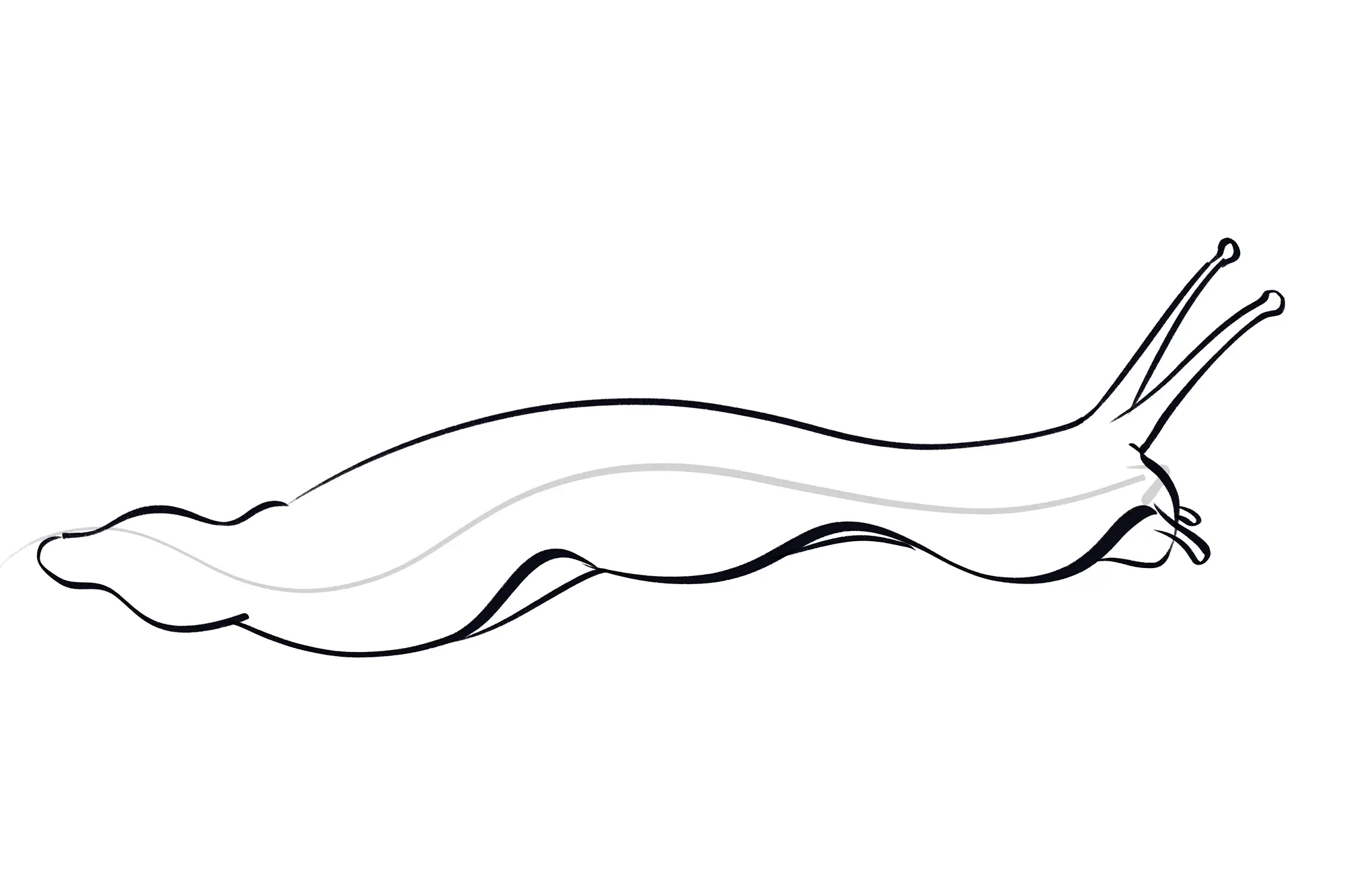
7) I place the shell. I could position it in the middle of the foot or even up to a few millimeters from its end. With a wide arc, I draw the hollow entrance of the shell: the peristome and the bottom of the shell.
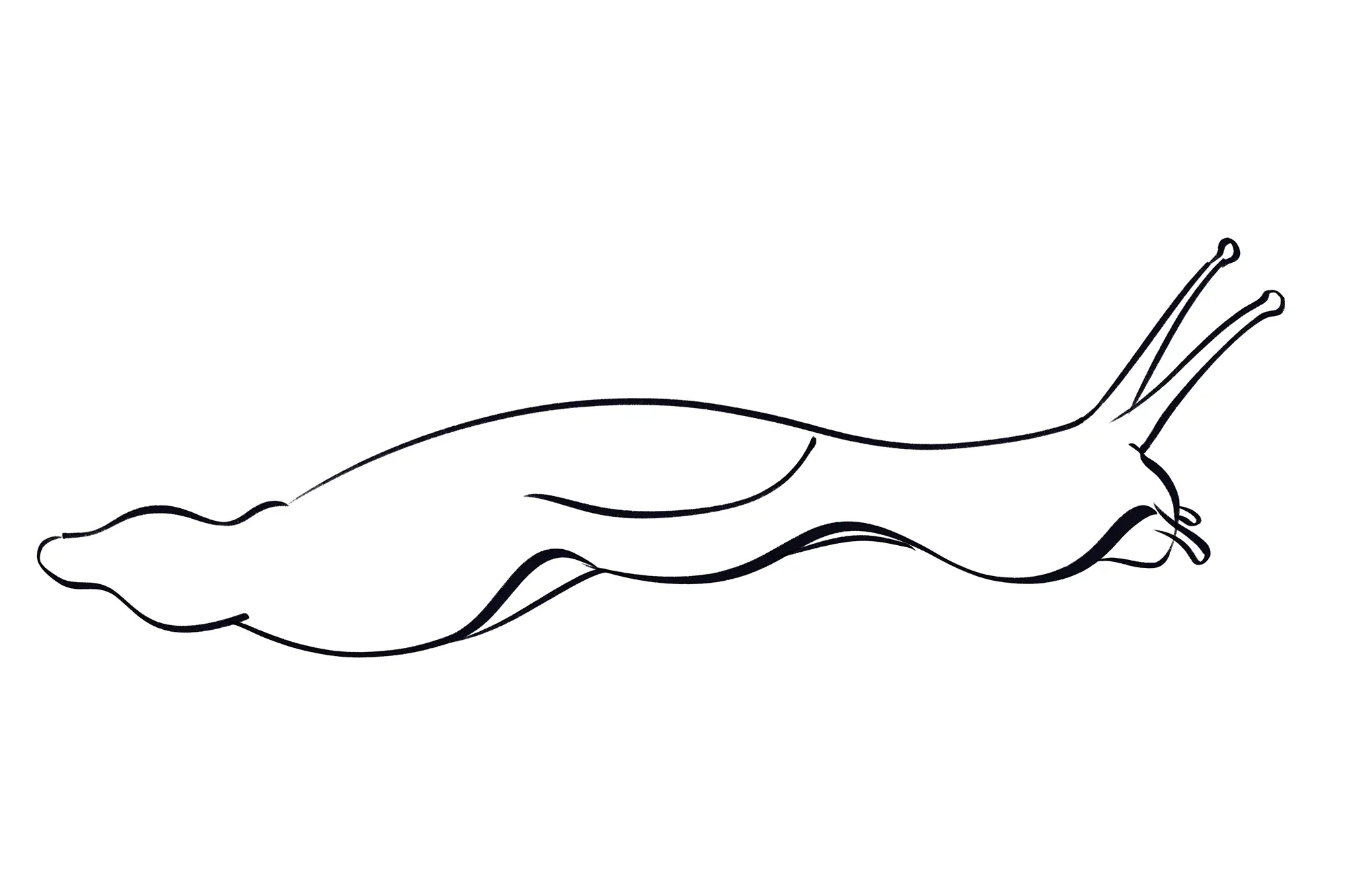
8) I draw the outline of the shell along with a dot representing the apex (the top of the characteristic spiral of the animal). The further this point is from the shell, the more conical it will be.
Attention, concerning the shape, you should know that it is not a perfect circle. You must follow the shape of the spiral where the opening is exponential. It is a logarithmic spiral that we find everywhere in nature, from the inside of a flower to the shape of galaxies…
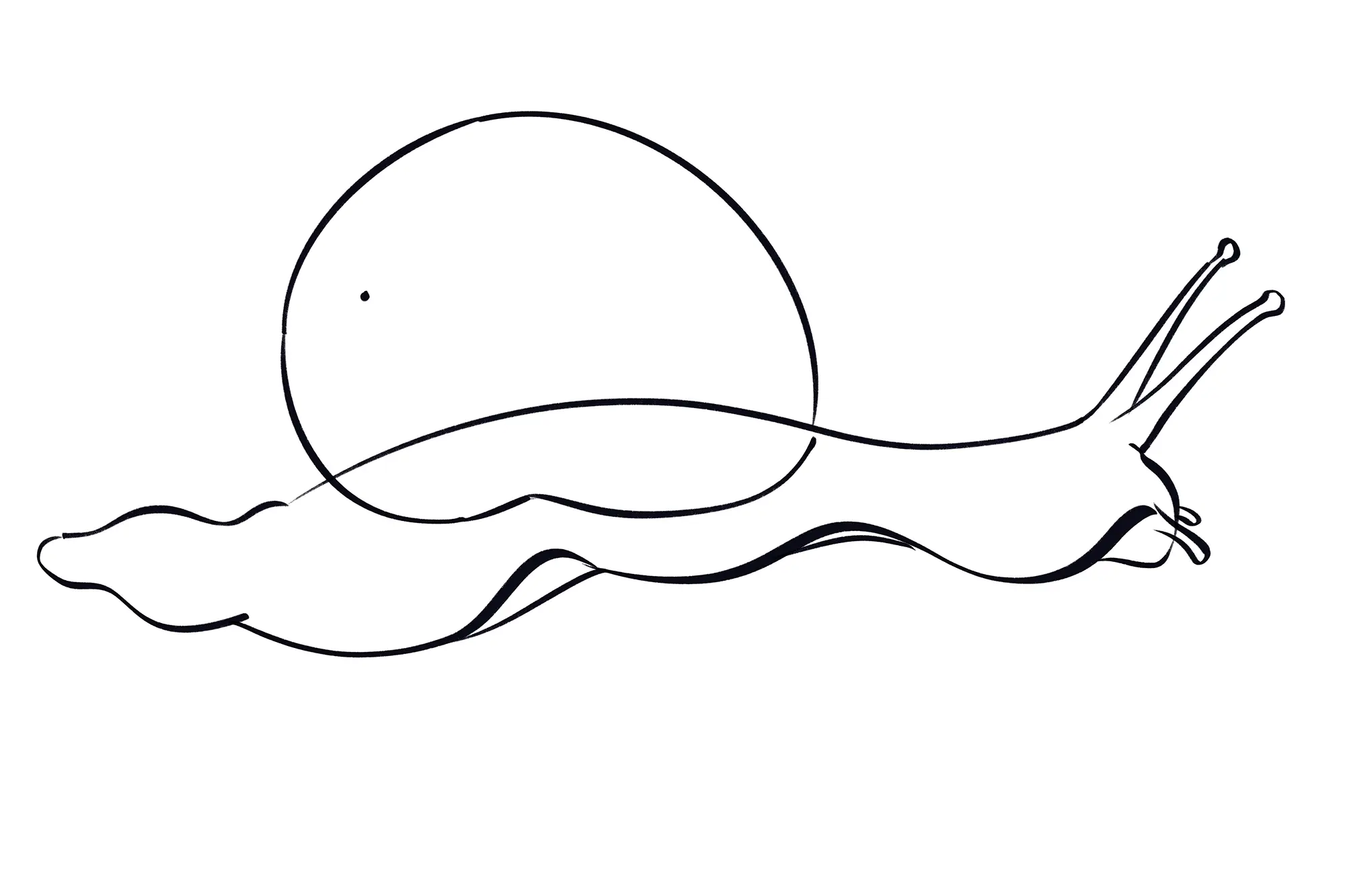
9) I erase any unnecessary lines.
Starting from the point, I draw the spiral. The line must stop at the peristome.
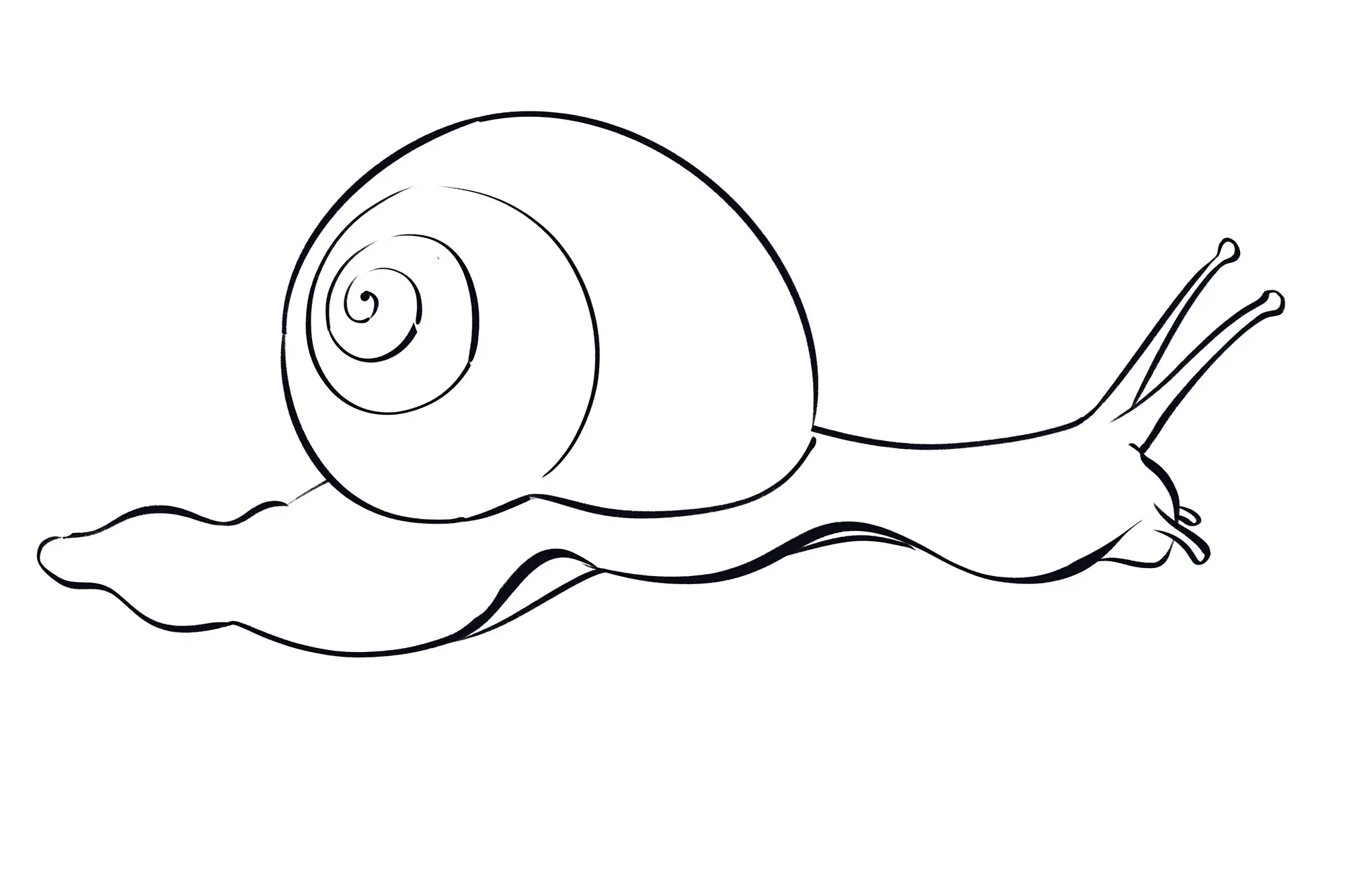
10) Now that we have drawn all the essential elements for the silhouette of the snail, we can go into the details with the texture of its shell by drawing curved lines that follow the shape of the shell.
Here, I soften the textures the closer I get to the summit.
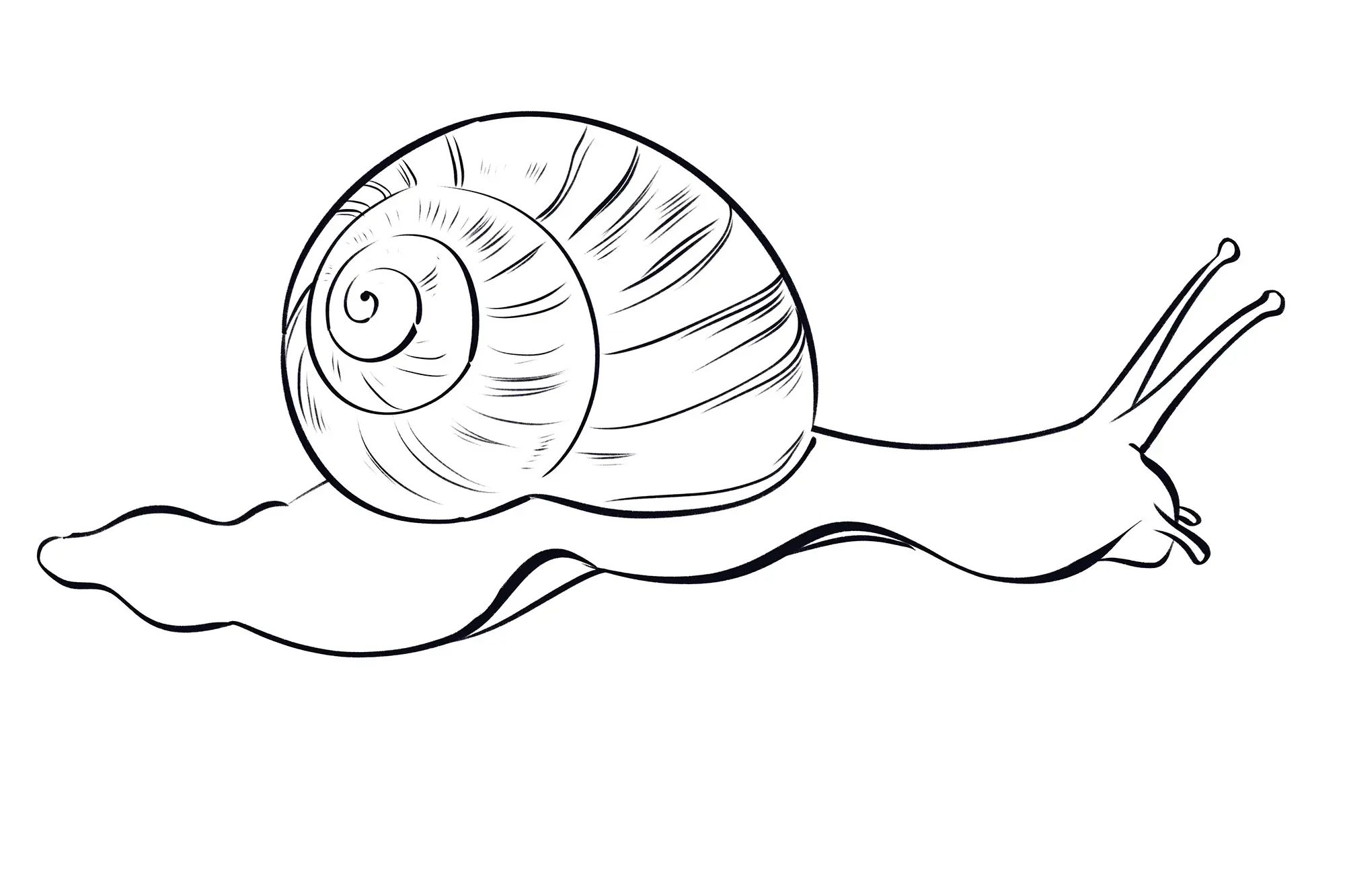
11) Very lightly, I sketch the textures of the edge of the foot as we saw earlier.
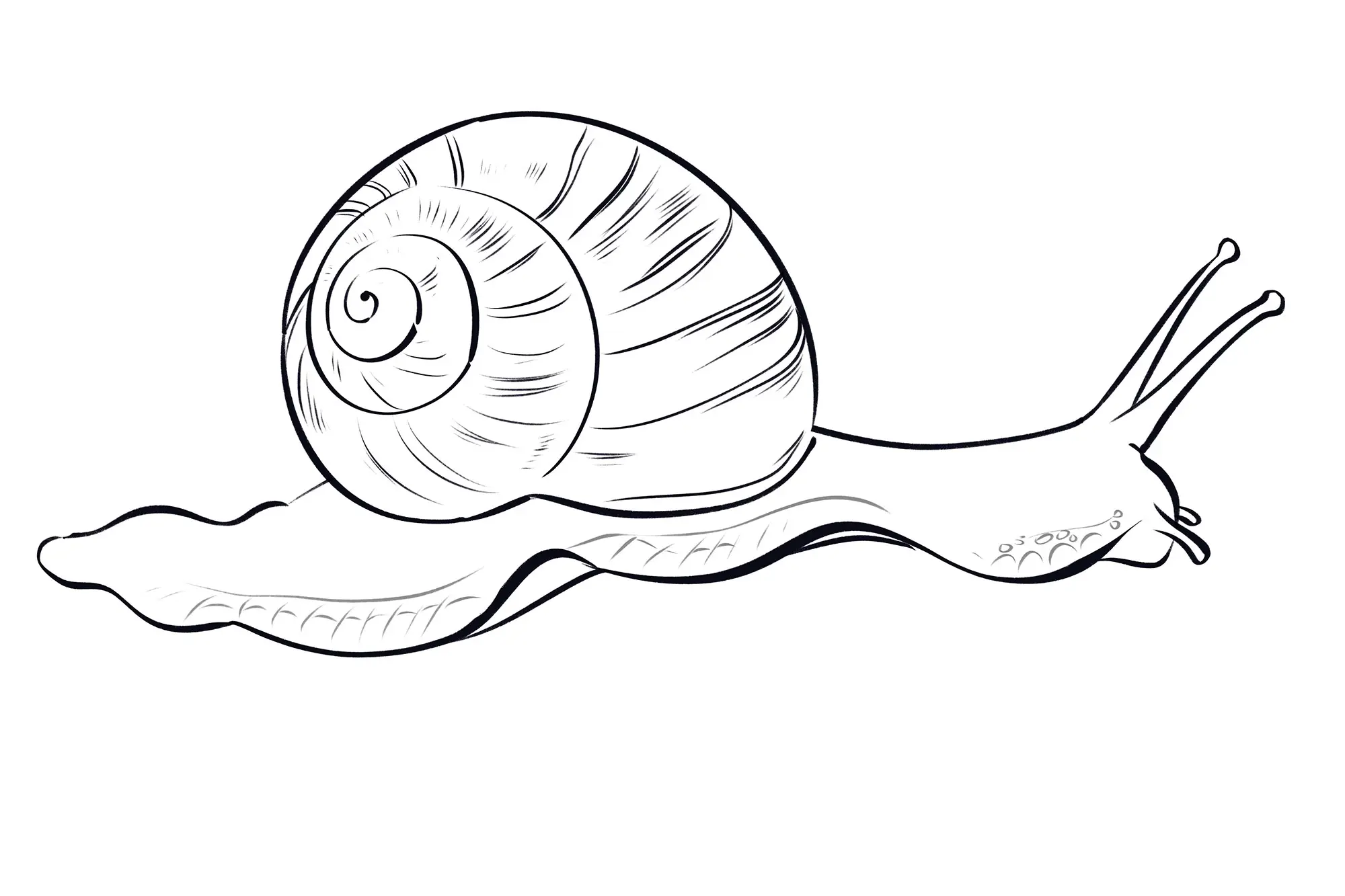
12) I texture the skin of its foot and head in some places. These lines should be lighter than those of the shell because the snail’s body is slightly translucent, while the shell is hard, more opaque, and partly made of calcium, not flesh.
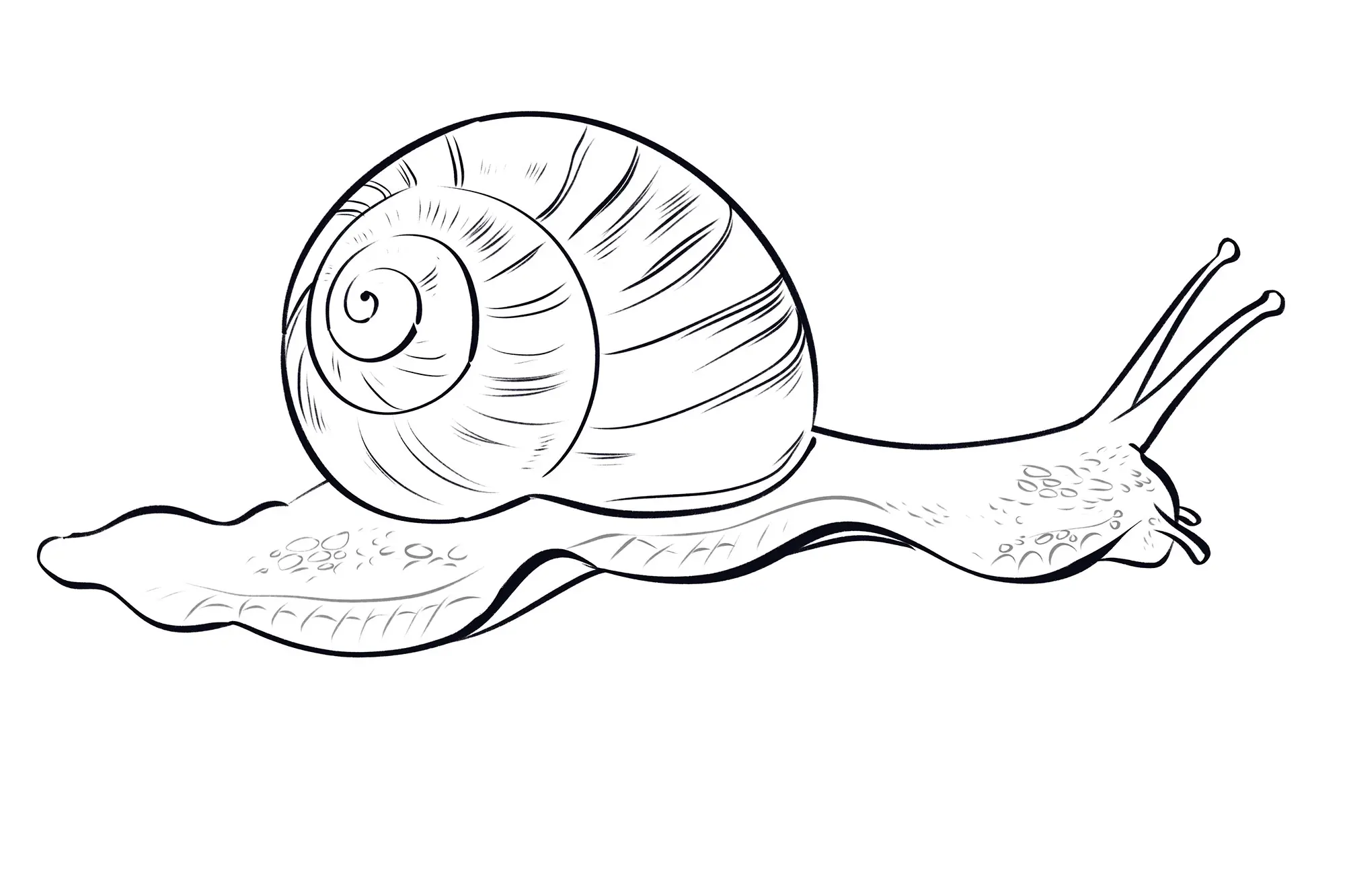
And here is our finished drawing!
Adding details to the snail drawing
To truly represent the textures of the snail, I need to add details to it.
1) I chose a medium gray as the base for the shell, and a slightly lighter gray for its foot. In places, on the extremities, I play with the transparency of this gray. Under its foot, I draw its cast shadow. It is light because its skin is translucent, especially along the edges of the foot.
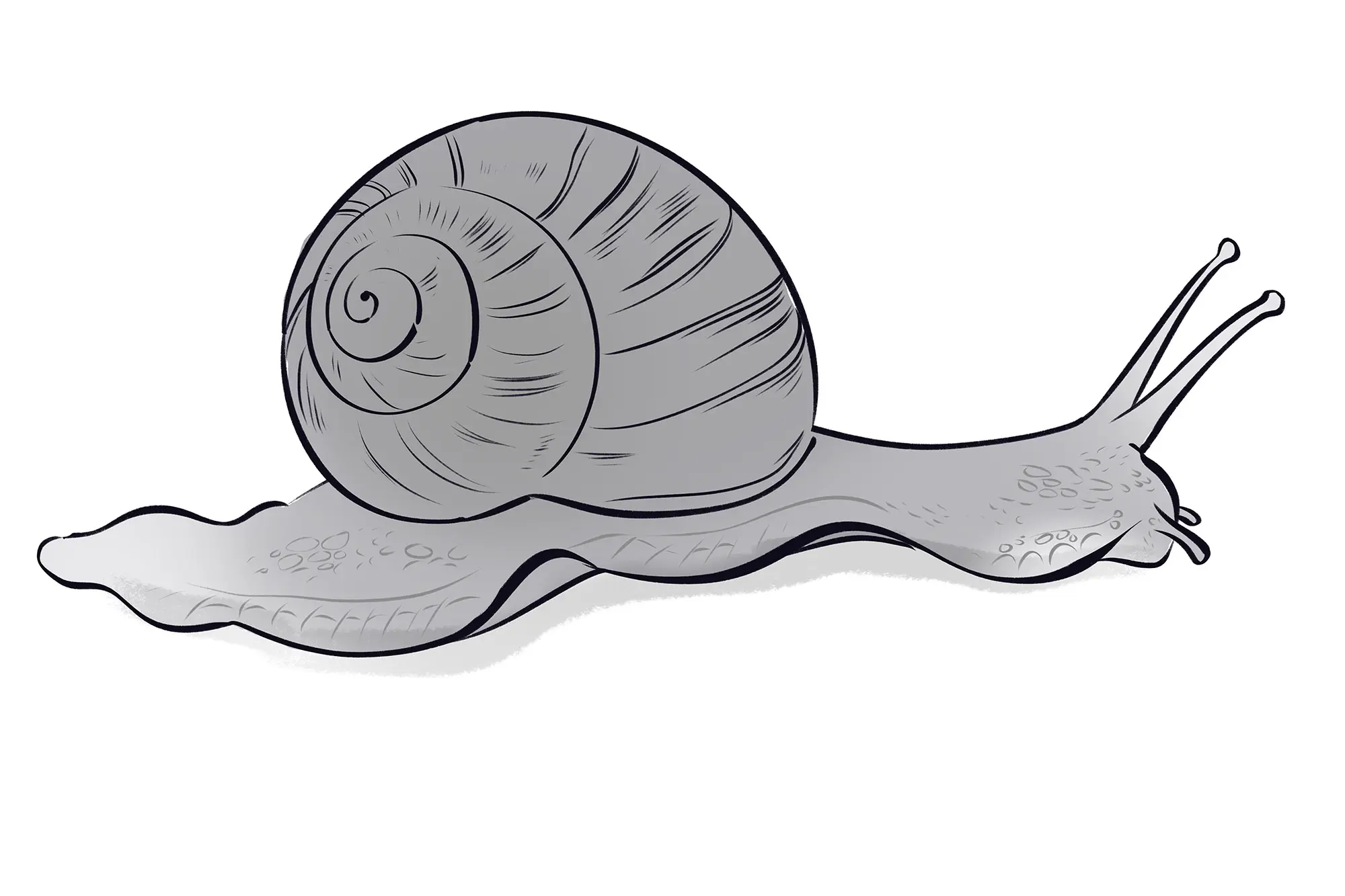
2) I define the shadows of its shell, and the shadow it casts by darkening them. To emphasize the textures, I erase small parts of the cast shadow that represent the textures of its skin catching the light (only at the edge of the shadow).
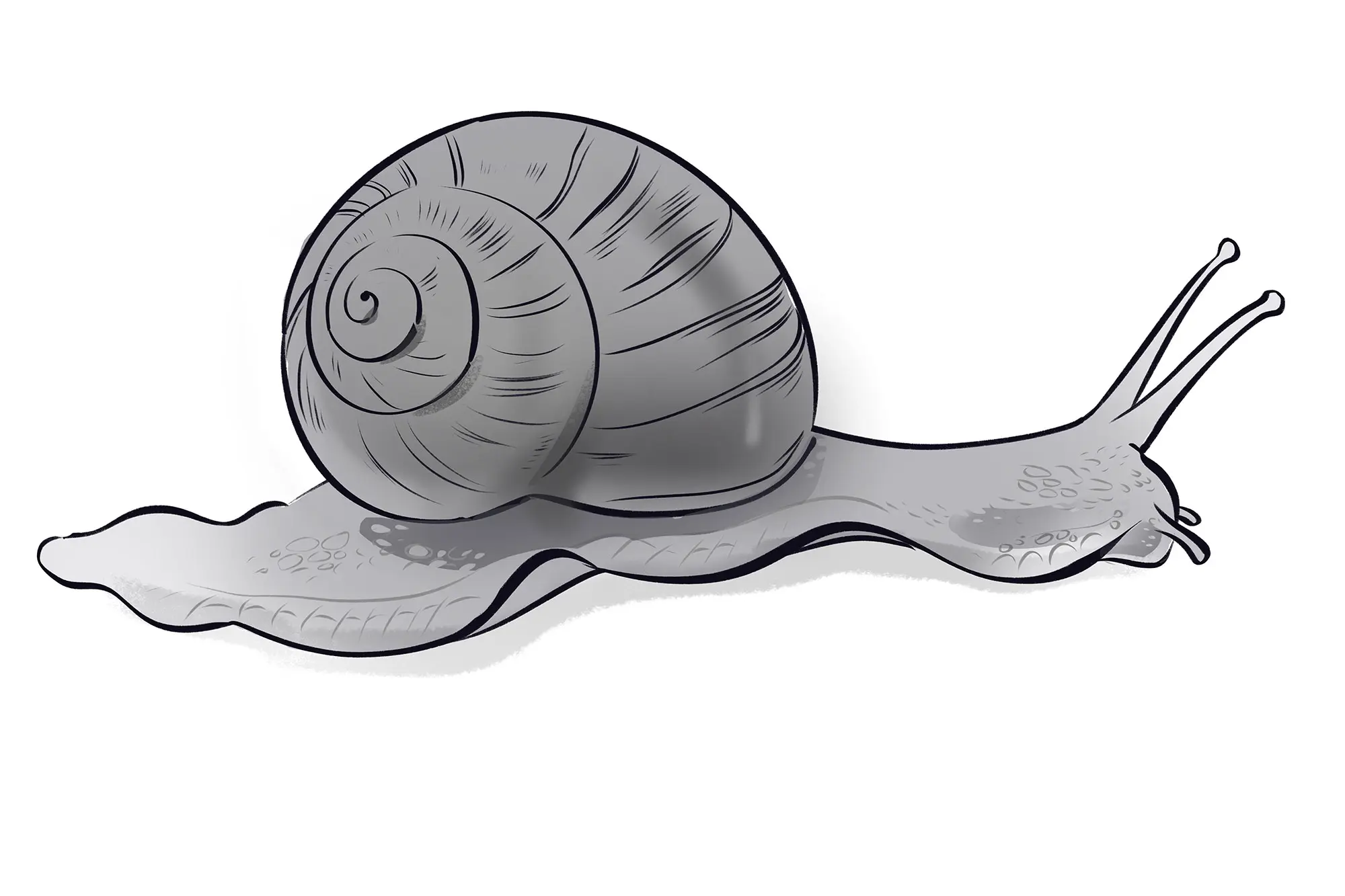
3) Using white, I draw the texture of its damp skin.
The points to emphasize are: the edges of the foot where the wave is highest, the top of its head, and the tip of the foot. I respect the previously defined shadow areas and do not add any white reliefs.
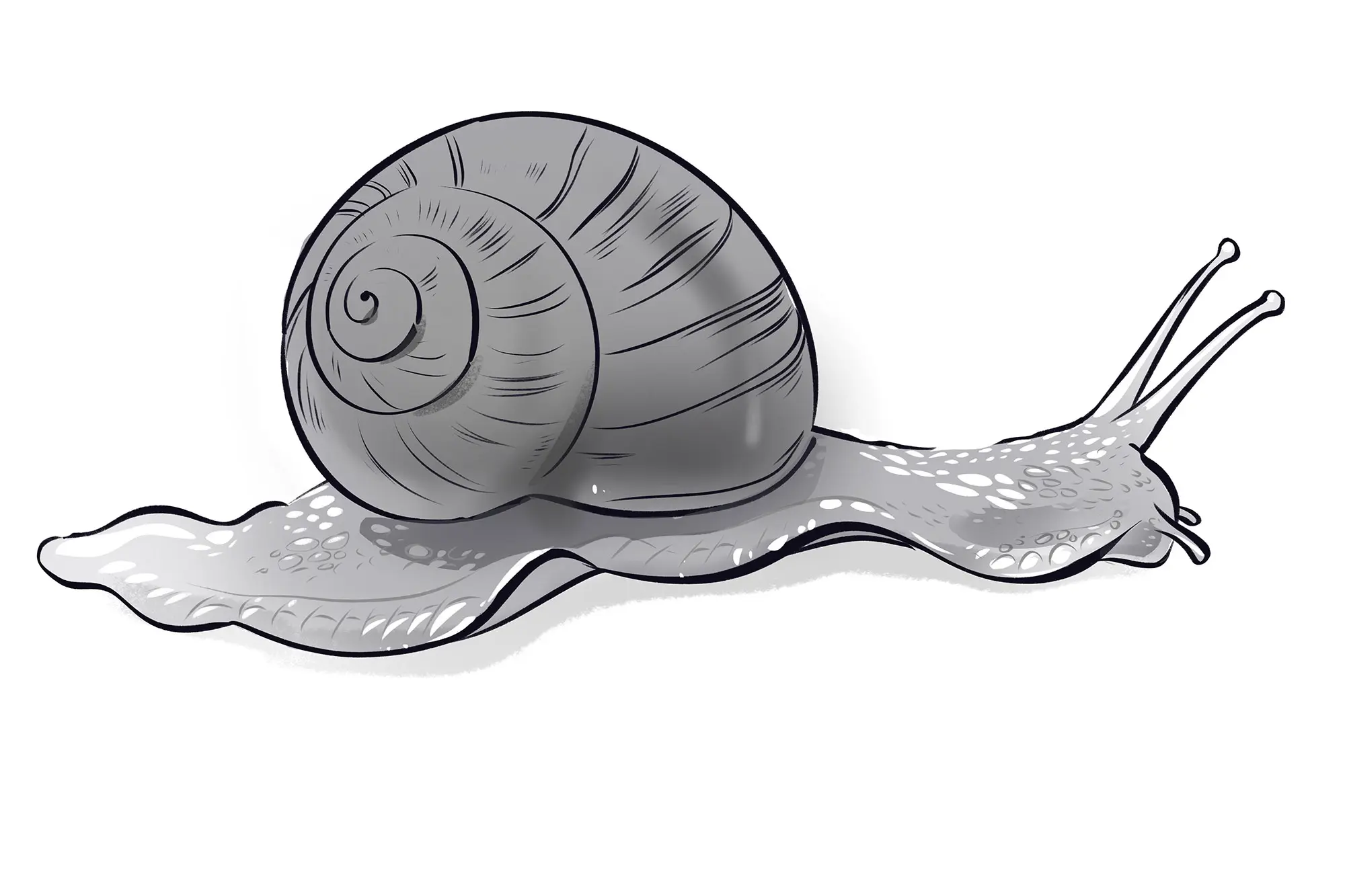
4) In order to bring the shell to life, I draw fine white reflections on top, following the direction of the light. To highlight the brightest point of it, I accentuate one reflection in particular, which will be thicker than the others.
To help you place the values, you can simplify the shell by thinking about how light interacts with a cylinder and with a sphere.
Tip: To show that the shell is rounded, the most marked white reflections are not on the edges but at ⅔ between each part of the spiral. Nevertheless, I add subtle white lines to the edges of the shell since the light moves around the shape.
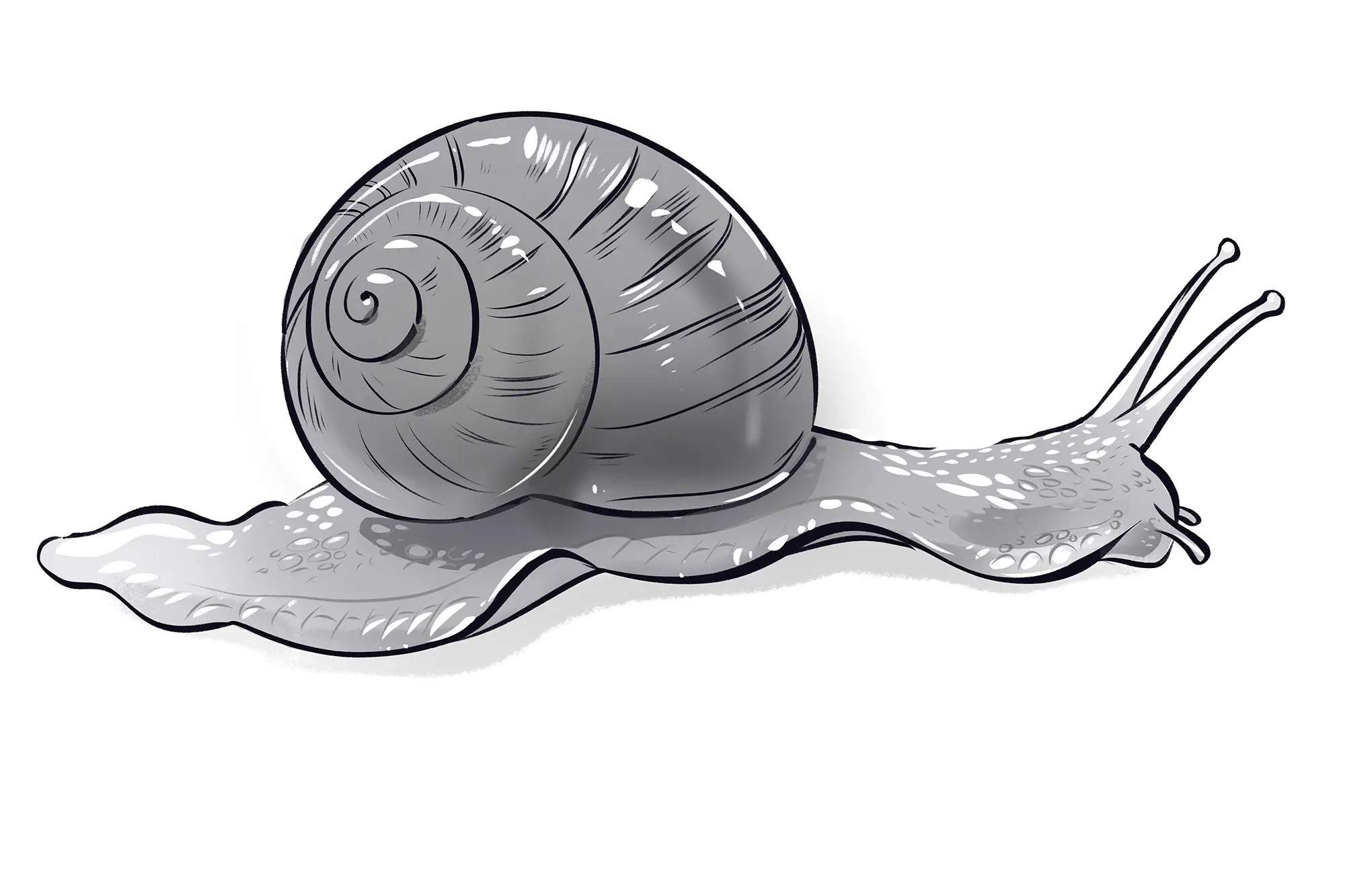
5) Snail shells are often textured or have light spots. Here, I've added textures on the top of the shell where the light catches the details.

Our snail is finished!
Writer and illustrator: Vincyane

